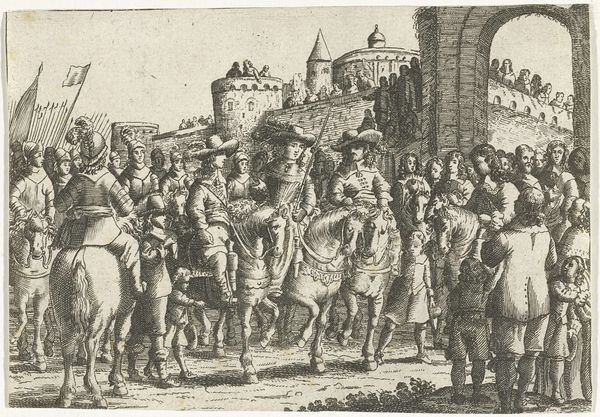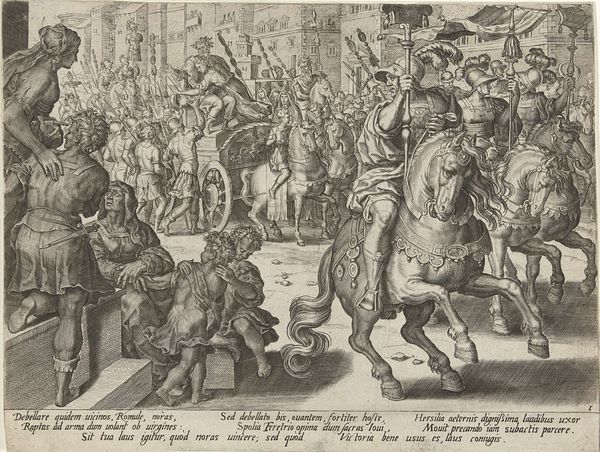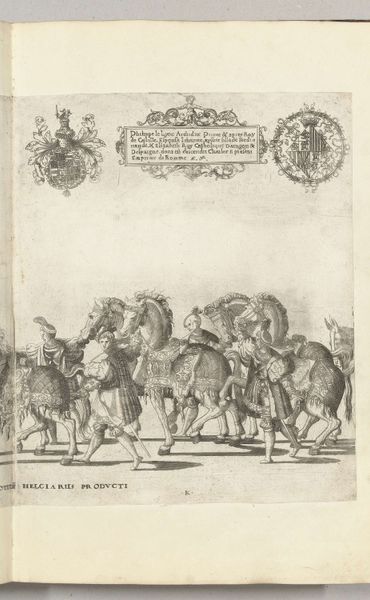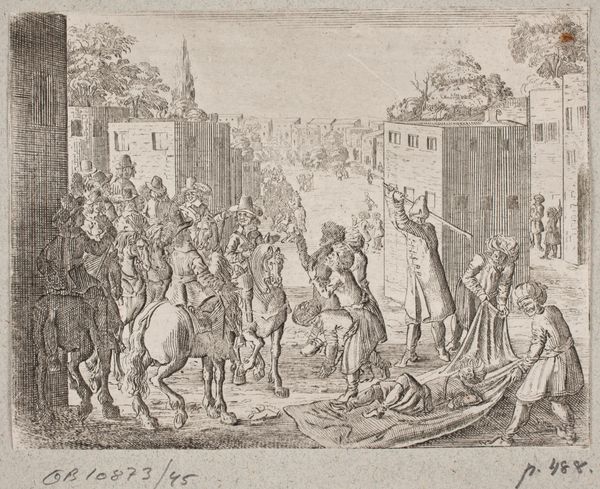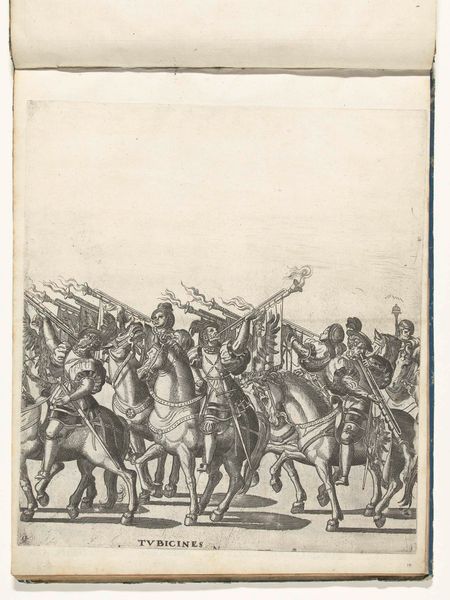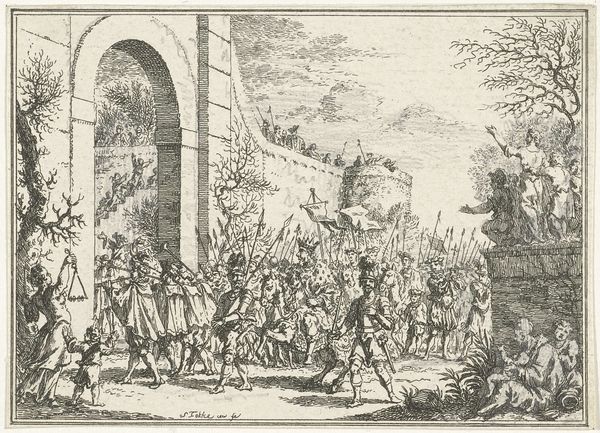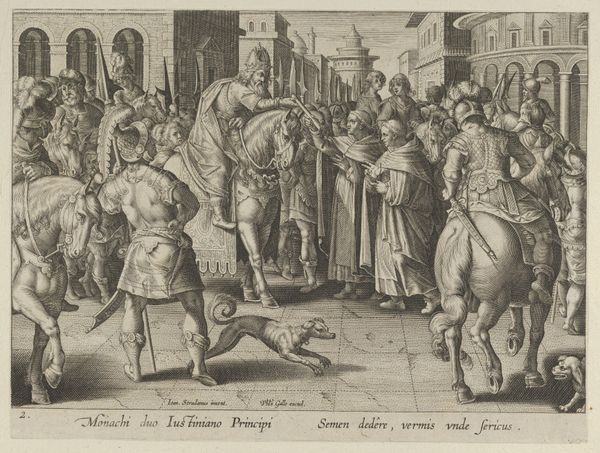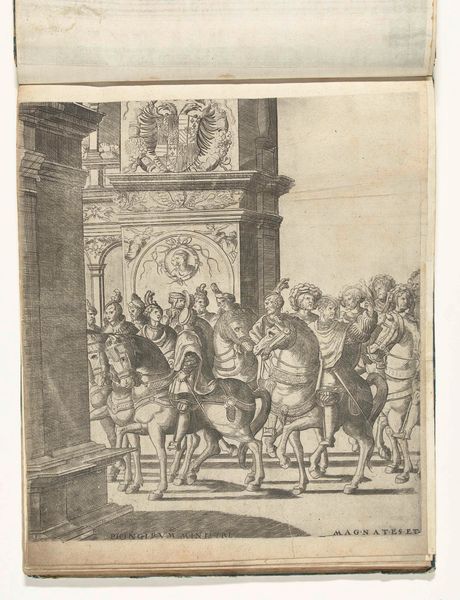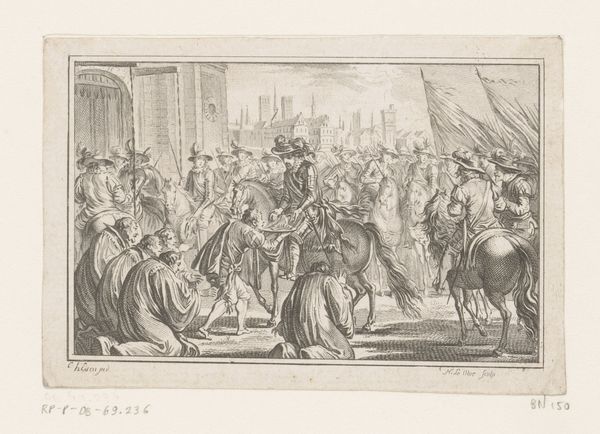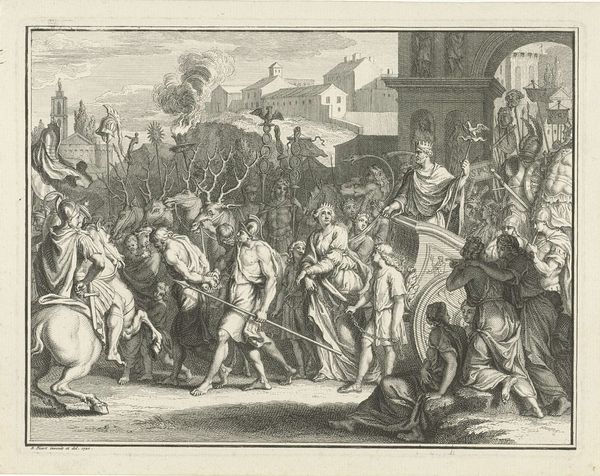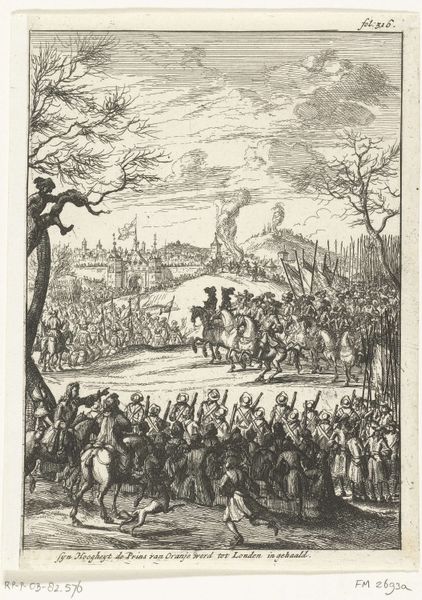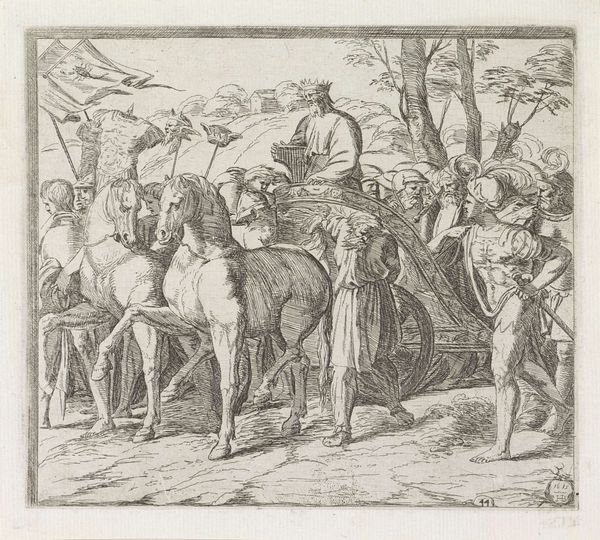
print, engraving
#
baroque
# print
#
old engraving style
#
figuration
#
line
#
history-painting
#
engraving
Dimensions: height 260 mm, width 196 mm
Copyright: Rijks Museum: Open Domain
Curator: Here we have Wenceslaus Hollar's engraving, "The Meeting of Turnus and Camilla," created in 1654. What strikes you first about this print? Editor: The precision! And, I confess, the palpable tension. All those figures meticulously rendered, but locked in a frozen tableau, aren't they? A pivotal moment before, perhaps, violence erupts. The social hierarchies feel rigid. Curator: Absolutely. The means of production is quite striking here, isn’t it? Hollar was a master of etching and engraving, and this work showcases that control. He expertly used line to create a sense of depth and texture with minimal materials: metal plates, acids, paper. Considering the number of these prints that were circulated, one must consider its broader socio-economic context and value for information transfer during its time. Editor: I agree. And the scene depicted is significant as well. "The Meeting of Turnus and Camilla" engages directly with Virgil’s Aeneid, and does so in a politically charged era. Turnus, a Rutulian king, clashes with Camilla, a warrior maiden, both opposing Aeneas. What does this depiction say about war, power, and even gender, in the mid-17th century? How were societal roles and expectations being negotiated through such historical narratives? The print could invite discourse surrounding gender and power structures of the period. Curator: Precisely, consider the sheer labor invested to generate a relatively cheap product. Also, it may speak to changing understandings of class and access, and even reflect the early days of image mass production. How could Hollar’s skills enable or shape different types of patronage and support at this point in his career? Editor: I hadn’t thought of the distribution networks at that time! Seeing it now, it also makes me question whose stories are being centered in historical narratives and art itself. This print visualizes, and arguably glorifies, a specific moment from the Aeneid that can perpetuate cultural biases toward masculinity in power and dismiss those resisting empire. Curator: This piece encapsulates labor processes with powerful figures from Virgil's tale—the etching creates a sense of drama around their decisions in life! I think of printmaking not just as art, but a significant information and manufacturing network that relied on collaboration to create an effective output and ultimately shape perspectives. Editor: Yes, now when I view the art, I see how we may approach any material expression to start a cultural and social analysis to unpack embedded power dynamics!
Comments
No comments
Be the first to comment and join the conversation on the ultimate creative platform.
